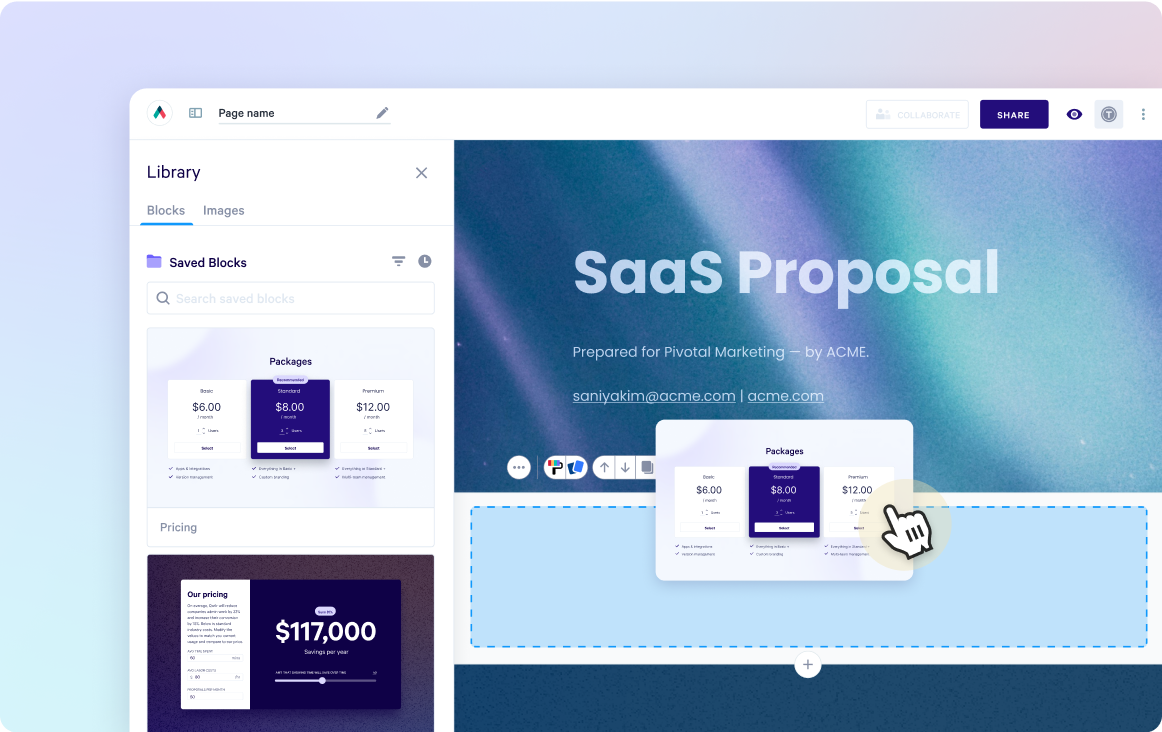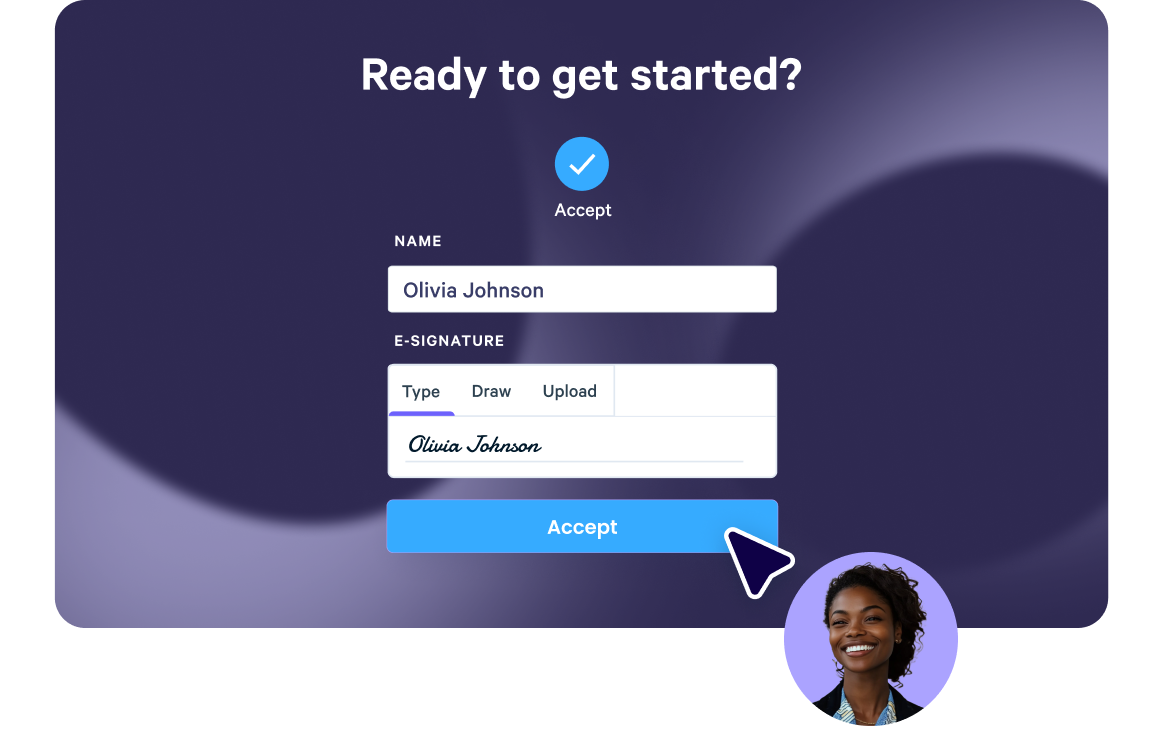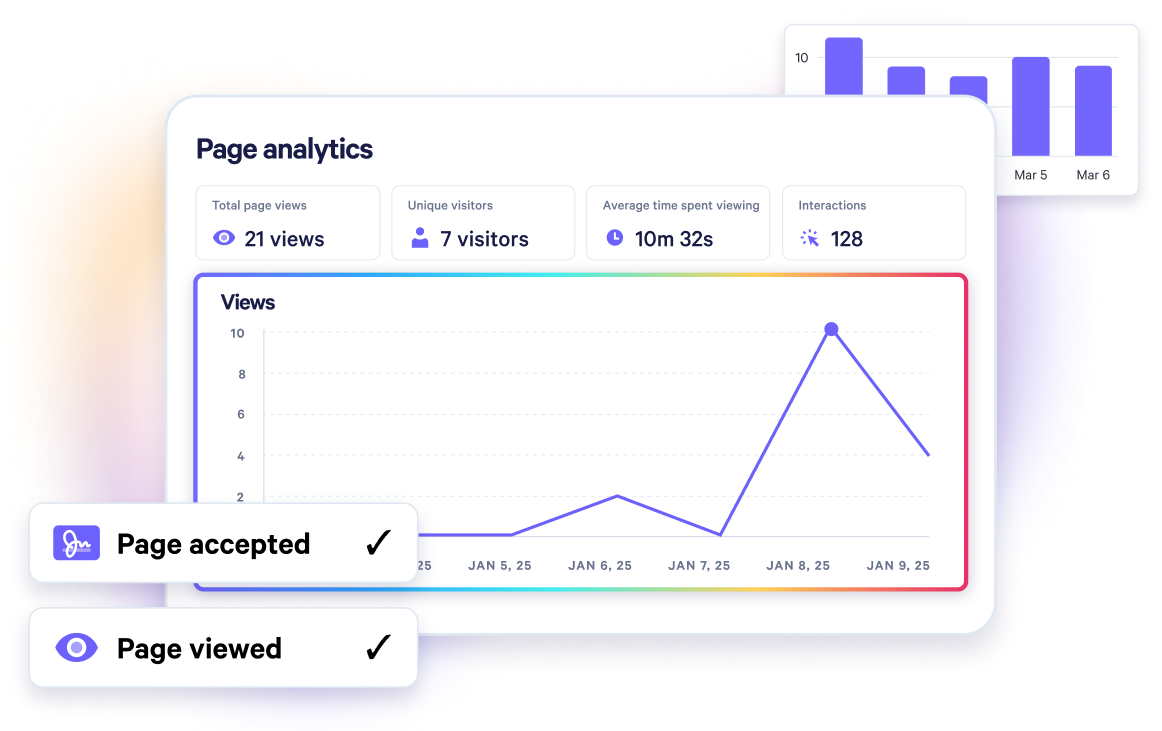Mutual Action Plan Template
Align goals and outcomes with our practical Mutual Action Plan Template – prepare a collaborative, clear, and effective roadmap for your clients.

About this template
Align your sales team and prospects with our Mutual Action Plan Template. This interactive template fosters collaboration, setting shared goals, milestones, and commitments to ensure a successful partnership and faster deal closures.
What's included?
- Executive summary
- Project overview
- Success criteria
- Timing & milestones
- Demo recordings
- Summary of previous calls
- Customer testimonial
- Case studies
Why Qwilr?
Design interactive proposals
Impress buyers with interactive proposals that stand out. Qwilr’s drag-and-drop editor makes it easy to create on-brand, stunning collateral — no design skills needed. Add videos, dynamic pricing, and ROI calculators to deliver a unique experience, while automated brand customizations ensure every proposal looks professional.

Built-in e-sign functionality
Combine stunning proposals, plain-text agreements, and secure e-signatures in one tool. Add print-friendly agreements alongside dynamic content and collect legally compliant e-signatures with ease. Track progress, capture multiple signatures, and close deals faster with Qwilr’s integrated e-sign functionality.

Real-time proposal analytics
Qwilr’s analytics provide full visibility into buyer engagement. Track when proposals are opened, signed, or shared, and get instant notifications for key buyer activities. See what buyers click on, how they engage, and prioritize follow-ups based on real-time insights—all designed to help close deals faster.

Templates for every use case
Explore templates for sales, marketing, customer success, sales enablement and more.
Explore sales process templatesFrequently asked questions
When using a Mutual Action Plan in your sales process, you and your buying team should be meeting regularly to collaborate and move the plan forward. There should be takeaways after each meeting for both sides. These should be captured in your plan and timeline to ensure the deal is moving forward.
To ensure that your plan is moving forward at a good pace, it is important to keep your buying team engaged. They may not have the same urgency to get the deal done as you do. This is why ROI calculations are so critical – to create a shared sense of urgency. The sooner the deal is done, and the project is underway, the sooner the clients will start to see a return on their investment.
Having a template will help you create your mutual action plan more quickly. If you work in a larger organization and have more than one deal active at a time, the template will help you quickly craft a plan that will delight your customer every step of the journey – plus, with Qwilr you can automate this process but pulling in CRM record information directly into your Mutual Action Plans.
Because a mutual action plan is a joint effort between buyers and sellers, regular touchpoints should happen during the process. Depending on your timeline and needs, you may want to meet with your buying team weekly to check in, share information and ensure the milestones along the timeline are being met.
As a bonus, when you set up regular meetings for updates and communication, you can save yourself from all those follow up emails we all hate – the ones that say things like “just checking in” or “what’s the status on XYZ” – since this is all part of your joint plan!
You’ll need to engage everyone on the buying team when creating your mutual action plan. This is especially true in a large organization with complex deals. According to research conducted by Gartner, “The typical buying group for a complex B2B solution involves six to 10 decision makers‚ each armed with four or five pieces of information they’ve gathered independently and must deconflict with the group.”
As the champion leading the deal, it is important that you know who everyone on the buying team is and create a plan to engage with all of them throughout the process to build consensus. You may have a smaller core team that you work with more frequently, but you should connect with broader stakeholders through the sales process to build alignment and ensure successful implementation post closing the deal.
You should start your mutual action plan during your discovery or demo call. This initial call will help you uncover customer priorities, so you can start to build the plan. The action items and next steps you take away from that call will become the first steps in building out your mutual action plan together.
At Qwilr, we’ve created templates that are designed to help you achieve success. Our template was thoughtfully created to impress buyers and drive your deals forward. The template is easy to use and customize and is visually impressive. It can be updated in real-time so that both the sales team and the buying team have access to all documents, call recordings, and the ROI calculator by clicking a link instead of digging through emails or looking at out-of-date spreadsheets.
Like what you see here? Qwilr has templates for Gap Selling, Enterprise Sales, Customer Onboarding, and much more! Sign up today for a 14 Day free trial and see what Qwilr can do for your sales organization!




